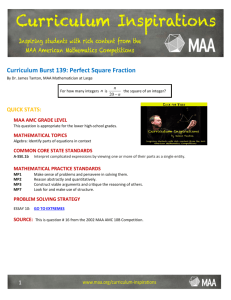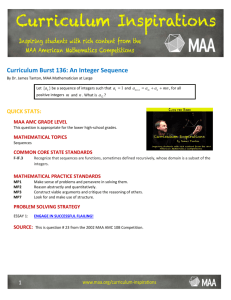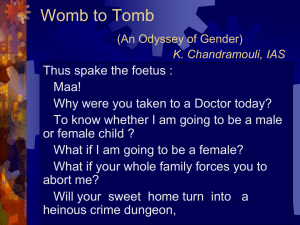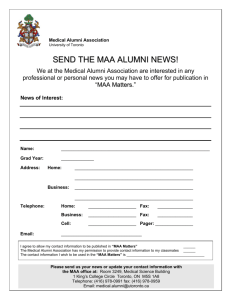Curriculum Burst 54: What's the Domain?
advertisement
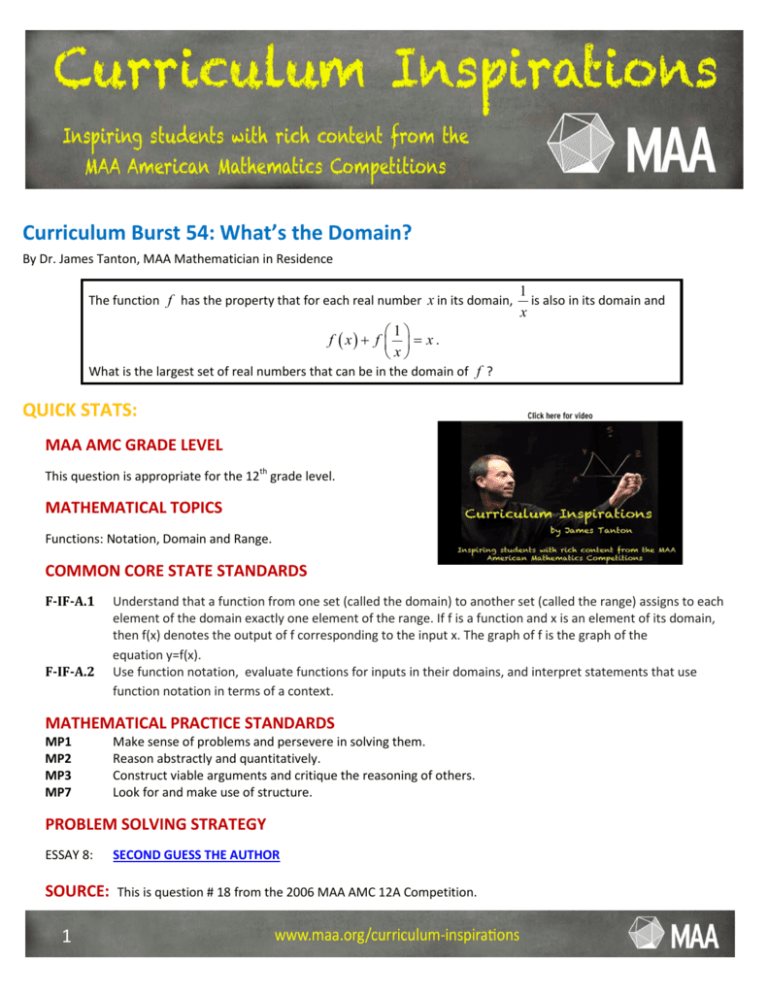
Curriculum Burst 54: What’s the Domain?
By Dr. James Tanton, MAA Mathematician in Residence
The function f has the property that for each real number x in its domain,
1
is also in its domain and
x
1
f ( x) + f =
x.
x
What is the largest set of real numbers that can be in the domain of f ?
QUICK STATS:
MAA AMC GRADE LEVEL
This question is appropriate for the 12th grade level.
MATHEMATICAL TOPICS
Functions: Notation, Domain and Range.
COMMON CORE STATE STANDARDS
F-IF-A.1
F-IF-A.2
Understand that a function from one set (called the domain) to another set (called the range) assigns to each
element of the domain exactly one element of the range. If f is a function and x is an element of its domain,
then f(x) denotes the output of f corresponding to the input x. The graph of f is the graph of the
equation y=f(x).
Use function notation, evaluate functions for inputs in their domains, and interpret statements that use
function notation in terms of a context.
MATHEMATICAL PRACTICE STANDARDS
MP1
MP2
MP3
MP7
Make sense of problems and persevere in solving them.
Reason abstractly and quantitatively.
Construct viable arguments and critique the reasoning of others.
Look for and make use of structure.
PROBLEM SOLVING STRATEGY
ESSAY 8:
SOURCE:
1
SECOND GUESS THE AUTHOR
This is question # 18 from the 2006 MAA AMC 12A Competition.
THE PROBLEM-SOLVING PROCESS:
As always, the first step is …
STEP 1: Read the question, have an
emotional reaction to it, take a deep
breath, and then reread the question.
I feel “thrown” by this question. It looks like a strange,
nothing like any other question I have seen before.
1
x
What can I possibly do with f ( x ) + f =
x ? How can I
tell what the function is from this?
My first instinct is to skip this question and try a different
one!
Let’s go back to the general situation. We have some
function that satisfies the equation:
1
f ( x) + f =
x
x
for all inputs x in its domain. So let’s put in the input 1 / x
as well. Then the equation reads:
1
f (1 / x ) + f
1/ x
=
1/ x
That is:
1
1
.
f + f ( x) =
x
x
Deep breath.
1
x
The fact that f ( x ) + f =
x is coming out of the blue
and looks so strange makes me think that it is NOT coming
out of the blue, that it represents something clever the
author of this question constructed. Can I use the
strangeness of this formula to my advantage?
We need to split “ x ” into a sum of two related things:
1
f ( x ) + f . Hmm.
x
Just a random thought: Would f ( x ) =
Well, I don’t really know what that previous paragraph
means or does for me, but I like what I did in the middle of
it – using 1 / x as an input.
x
1 x
and f =
2
x 2
be meaningful in some way? The second equation has an
1
input of , which is hard to think about. But I can be
x
1
. We get:
sneaky and think of the input
1/ x
1
x
1 1/ x
. That is f ( x ) =
. But f ( x ) = by
f
=
2x
2
2
1/ x
x
1
the first equation so we get =
, giving x = 1 or
2 2x
x
1 x
x = −1 . So f ( x ) = and f = forces x = ±1 .
2
x 2
Ahh! So for any x in this function’s domain, x and
equal f ( x ) + f (1 / x ) . So we have x =
1
both
x
1
giving x = ±1 .
x
There can be only two possible x -values in the domain of
this function. Moreover, our “random thought” in the
previous column shows that f ( x ) =
x
, defined for
2
x = ±1 , is an example of a function satisfying the given
equation on our domain of {1, − 1} , so everything we’ve
been talking about really can exist.
The answer to this question is:
Largest possible domain=
{1, − 1} .
1
1
, f ( −1) =
− the only example
2
2
of a function defined on {1, − 1} satisfying
Extension 1: Is f (1) =
1
f ( x) + f =
x?
x
Extension 2: Find an example of a function that satisfies
f ( xy ) =
x ⋅ f ( y ) + f ( x ) ⋅ y for all positive inputs x and
y . (Negative inputs too?)
Curriculum Inspirations is brought to you by the Mathematical Association of America and the MAA American Mathematics
Competitions.
2
MAA acknowledges with gratitude the generous contributions of
the following donors to the Curriculum Inspirations Project:
The TBL and Akamai Foundations
for providing continuing support
The Mary P. Dolciani Halloran Foundation for providing seed
funding by supporting the Dolciani Visiting
Mathematician Program during fall 2012
MathWorks for its support at the Winner's Circle Level
3
